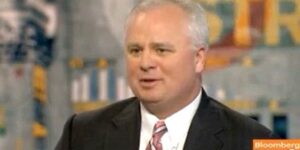
Does AI Improve Job Satisfaction? Here’s What Leaders Say
We’ve all seen the headlines. Dystopian predictions about the long-term economic impact of artificial intelligence (AI) continue to dominate the news. But what do people

We’ve all seen the headlines. Dystopian predictions about the long-term economic impact of artificial intelligence (AI) continue to dominate the news. But what do people

A career, by definition, is something that develops over an extended period of time. In other words, a successful career is not born — it

The Problem With Grind Culture In recent years, “hustle” and “grind” culture have become equated with drive, ambition, and success. The logic is that if

Toxic cultures are like dark clouds looming over the world of work. Wherever they go, they wreak havoc with employee wellbeing. That’s not an overstatement.

In today’s challenging talent environment, retaining employees is a must. That’s why so many organizations consider onboarding new hires a top priority. When people feel

When our oldest child entered middle school, we found it necessary to meet with his principal. At that time of course, school was his full-time
Worker happiness has fallen every year for the last 25 years–in good economic times and bad. Today, over half of American workers effectively hate their

If you think your brain makes you a great leader, you better check your head. According to the Conference Board, job satisfaction in America has
When Wharton Business School professor Richard Shell was faced with a life-threatening illness, he was forced to think about the big picture. What was success
Two middle-aged men walk into an elevator. The taller and heavier of the two points to the other’s t-shirt. It’s an Saturday Night Live t-shirt
A relatively recent term, “job hopping” is now used in mainstream society as a way to describe the phenomena of hopping from one job to

Successful leaders understand the power of human nature. What do they know about behavior that others can learn?

How can employers win the hearts and minds of today’s workforce? The TalentCulture community takes a closer look — for better or worse.

Are you ready for the next step in your career? It may be time to take a step back and look more closely at what you can offer

Everyone wants a fulfilling job. But how do we find it, and why should employers support us? Let’s talk about it at #TChat Events

Grand as it may be, today’s “always on” connectivity experiment is taking a toll, and business leaders are just starting to respond. But how can we help ourselves?